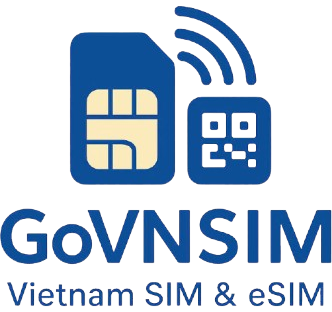Vietnam eSIM vs Physical SIM: The 2025 Comparison for Smart Travelers
Choosing between a Vietnam eSIM and a physical SIM is one of the first connectivity decisions travelers face. With fast 4G/5G networks and convenient digital activation, understanding the strengths of each option helps you avoid airport queues, save time and stay connected as soon as you land.
📌 Quick Comparison: Vietnam eSIM vs Physical SIM
| Feature | Vietnam eSIM | Physical SIM |
|---|---|---|
| Activation | Online via QR, instant | Airport/shop visit |
| Setup Time | 2–10 minutes | 15–60 minutes depending on queues |
| Device Support | eSIM-compatible phones | Any unlocked device |
| Data Speed | 4G/5G nationwide | 4G/5G nationwide |
| Risk | No physical loss | Loss/damage possible |
| Phone Number | Optional (plans with VN number available) | Always included |
| Dual SIM Function | Use alongside home SIM | Only if device supports dual SIM |
| Where to Buy | Online | Airport kiosks, mobile shops |
| Best For | Tourists, short trips, digital nomads | Older devices, long-term residents |
📱 Benefits of Vietnam eSIM
Vietnam eSIM offers quick activation, no physical handling and a smooth dual-SIM experience for travelers who want reliable data without visiting a store. You can install the plan before departure, switch providers digitally and reduce plastic waste. eSIM works on major phones such as iPhone, Samsung, Google Pixel, Oppo and Xiaomi.
📦 Advantages of Physical SIM Cards
Physical SIM cards remain useful for older devices and for travelers who prefer face-to-face setup. They always come with a Vietnamese phone number and can be upgraded to longer-term packages for expats after the initial prepaid period. Some visitors like the reassurance of having staff insert the SIM and check settings on the spot.
💰 Price Snapshot: Vietnam eSIM vs Physical SIM
| Option | Data / Validity | Approx. Price |
|---|---|---|
| GoVnSIM – Viettel eSIM | 5GB/day · 15–30 days | $13.50–$18.90 |
| GoVnSIM – Vietnam eSIM (MobiFone) | 4GB–6GB/day · 20–30 days | $14.90–$17.90 |
| Airport physical SIM | 4–5GB/day · 15–30 days | ≈ $22–$28 |
| Local shop SIM | 3–5GB/day | ≈ $18–$23 |
🛠 How to Set Up an eSIM
Check your phone’s eSIM compatibility, purchase a plan online from GoVnSIM, receive the QR by email or WhatsApp, go to Settings and add eSIM, scan the QR and enable mobile data. Activation usually takes just a few minutes using stable Wi-Fi at your hotel or the airport.
🧩 How to Set Up a Physical SIM
Bring your unlocked device to an airport kiosk or a mobile shop, choose a plan that suits your stay, provide your passport for registration, let staff insert the SIM and configure APN if needed. Activation may take several minutes during busy periods.
🎯 Who Should Choose Each Option?
eSIM is best for tourists, short visits, multi-country trips and anyone who wants a fast, contactless setup. Physical SIM is suitable for older phones or long-term residents who may later switch to local domestic packages.
📘 Full Comparison Guide
For a deeper breakdown of activation, coverage differences and traveler insights, see the full guide: Vietnam eSIM vs Physical SIM – Which Is Better for 2025 Travelers?
🧭 Real Traveler Example
Daniel from Spain compared buying a SIM at the airport with installing a GoVnSIM eSIM at his hotel. His eSIM activated within minutes using Wi-Fi, and he used the Vietnamese number to coordinate with his tour operator, book Grab rides and receive delivery confirmations from food apps. For his short trip, eSIM was faster and more convenient.
📡 Network Options via GoVnSIM
GoVnSIM provides eSIM plans using Vietnam’s major networks. Viettel offers excellent nationwide reach and reliable performance in remote areas. MobiFone delivers strong speeds in major cities and coastal regions. VinaPhone is a popular choice for short tourist stays across urban destinations.
For Viettel-specific insights, see Viettel eSIM Vietnam – The Ultimate Traveler’s Guide for 2025.
💡 Choosing Your Best Option
If you prefer a straightforward setup and want a Vietnamese number for ride-hailing, deliveries or hotel communication, you can check the Vietnam eSIM with Phone Number options.
Travelers heading into mountainous or less-connected areas can consider the Viettel eSIM for Tourists for the most consistent coverage across Vietnam.
📣 Plan Your Connectivity
Heading to Vietnam soon? Explore Vietnam-wide data packages and compare options before your trip. You can also pre-arrange airport transportation through GoVnSIM’s partner service here: Vietnam airport pickup service.
If you want a ready 30-day package, the Vietnam eSIM 30 Days Ultimate Plan offers generous daily data for a full month.
Support: WhatsApp +84 98 307 49 15 · LINE: anyaxiaoying · Email: info@govnsim.com
Part of Heera Travel Group – Explore more Vietnam tours at HeeraTravel.com.
